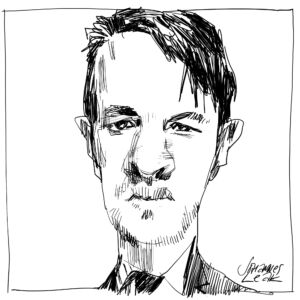Exploding the myth of youth gangs
The epidemic of gang violence in the UK only exists in the minds of politicians and pundits.

Gangs are back in the headlines. Last week, the London Evening Standard ran a three-day ‘investigation’ into London’s gang culture. It called it ‘Frontline London’. The reports followed the release of a new study by University College London of ‘high-risk young people in south London’. It revealed that nearly half of these high-risk children had seen a stabbing or shooting, one in four had witnessed a killing, and one in five had themselves been stabbed or shot.
The Standard’s intrepid reporter bravely ventured into London’s gangland, to attend a ‘soldier’s summit’ in Camberwell, south London. I know Camberwell for its Arts College and posh pubs, which only serve bottled ale. But, in the wake of the tragic killing of Jerome Edwards in Camberwell earlier this year, the Standard described it as a ‘postcode-war-riven patch of London’ and ‘just one of many similarly fraught “frontlines” that striate the capital’. The Standard is employing more than a little dramatic license here, as such violence is extremely rare in Camberwell. There is no evidence at this stage that Edwards was ever even involved in a gang.
In fact, there is no evidence whatsoever of any ‘postcode war’, or of any ‘epidemic’ of gang violence in London. There are no official statistics on the number of gangs or on the level of gang-related crime. Of the 155 teenage murders in London between 2005 and 2013, very few can be tied to any gang feud. More often than not, the media rush to label teen killings as ‘gang violence’ before quickly rowing back on such assertions when it’s revealed that neither the victim nor the perpetrators had anything to do with gangs.
Take, for example, the tragic killing of Ben Kinsella in June 2008. This was widely reported as an example of ‘gang violence’, despite the fact that the murder was the tragic end of an isolated altercation in a nightclub which had nothing to do with gangs. Today, as long as a crime is committed by a group of young black men, it seems it is fair game to situate it in the false narrative of ‘gang violence’.
The lack of any evidence of gang violence is understandable since no one really knows what ‘gangs’ are. The police’s definition of a ‘gang’ amounts to any group of young people regularly involved in petty crime. ‘Gangs’ are distinguished from ‘organised criminal networks’, which tend actually to be involved in high-level organised crime. It is hard to see how you could ever build any kind of evidence to demonstrate the links between ‘gangs’ and crime, let alone reliably justify the claim that these gangs are involved in a ‘postcode war’. But the lack of evidence did not stop the Standard ‘revealing’ that ‘250 gangs’ were ‘struggling’ for control over London’s streets.
The idea of youth gang warfare is hugely pervasive today. For years, the authorities and the media have propagated the idea that certain young people in London are ‘soldiers’, killing each other in the name of territory. David Cameron promised his own ‘all-out war’ against gangs following the summer riots in 2011. This preceded the publication of a Home Office report calling for ‘intensive police intervention’ to prevent gang crime. The Metropolitan Police has created specialist task forces to deal with gang violence. The idea has spawned TV series, plays, and a small library of academic literature. It seems we can’t get enough of the idea that our young people are all little Scarfaces, roaming the streets of the capital in their ongoing ‘struggle’ for dominance.
The tragedy of this false narrative is that it is self-perpetuating. Young people form their identities on the basis of what is offered to them by the adult world. The more we tell young people that there is a ‘turf war’ happening all around them, and the more we tell them that the thankfully rare murders which happen on our streets are a part of some broader narrative of gang violence, the more they will believe it. The constant search for evidence of gang violence means that the anecdotal evidence of young people is elevated to hard fact. The ludicrous figure of 250 different gangs in London does not describe anything in the real world, but it says an enormous amount about our willingness to take young people’s self-identification at face value.
So let’s stop talking about ‘youth gangs’, ‘turf wars’ and ‘soldiers’. The 155 teenage murders in London are, on the whole, tragic incidents involving angry adolescents. We have a responsibility to present them as such. Some kids may well tell you, when asked, that they are members of a ‘gang’, but they are only adopting the utterly distorted identity that the adult world has created for them. We can hardly be surprised if kids call themselves ‘gangsters’, when we adults seem so desperate to believe them.
Luke Gittos is law editor at spiked, a paralegal in criminal law and convenor of the London Legal Salon.
To enquire about republishing spiked’s content, a right to reply or to request a correction, please contact the managing editor, Viv Regan.









Comments
Want to join the conversation?
Only spiked supporters and patrons, who donate regularly to us, can comment on our articles.